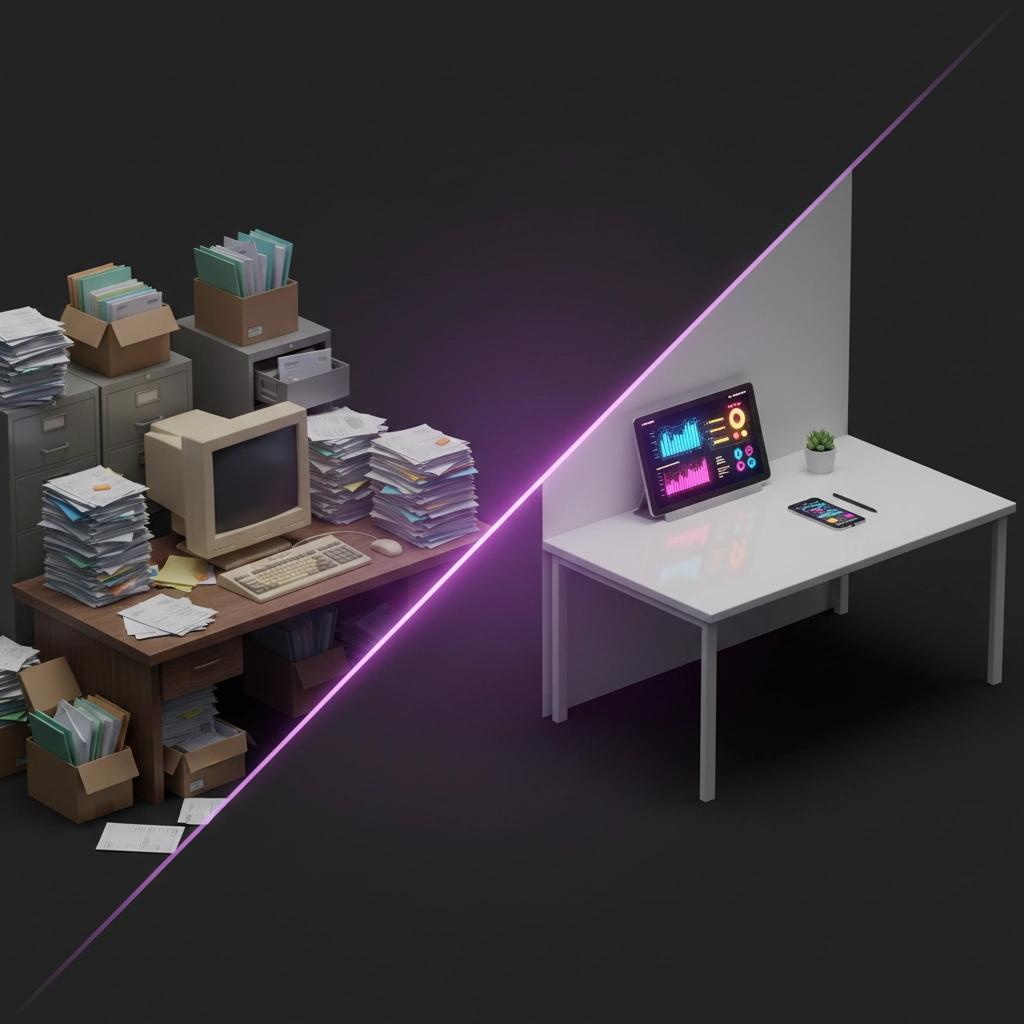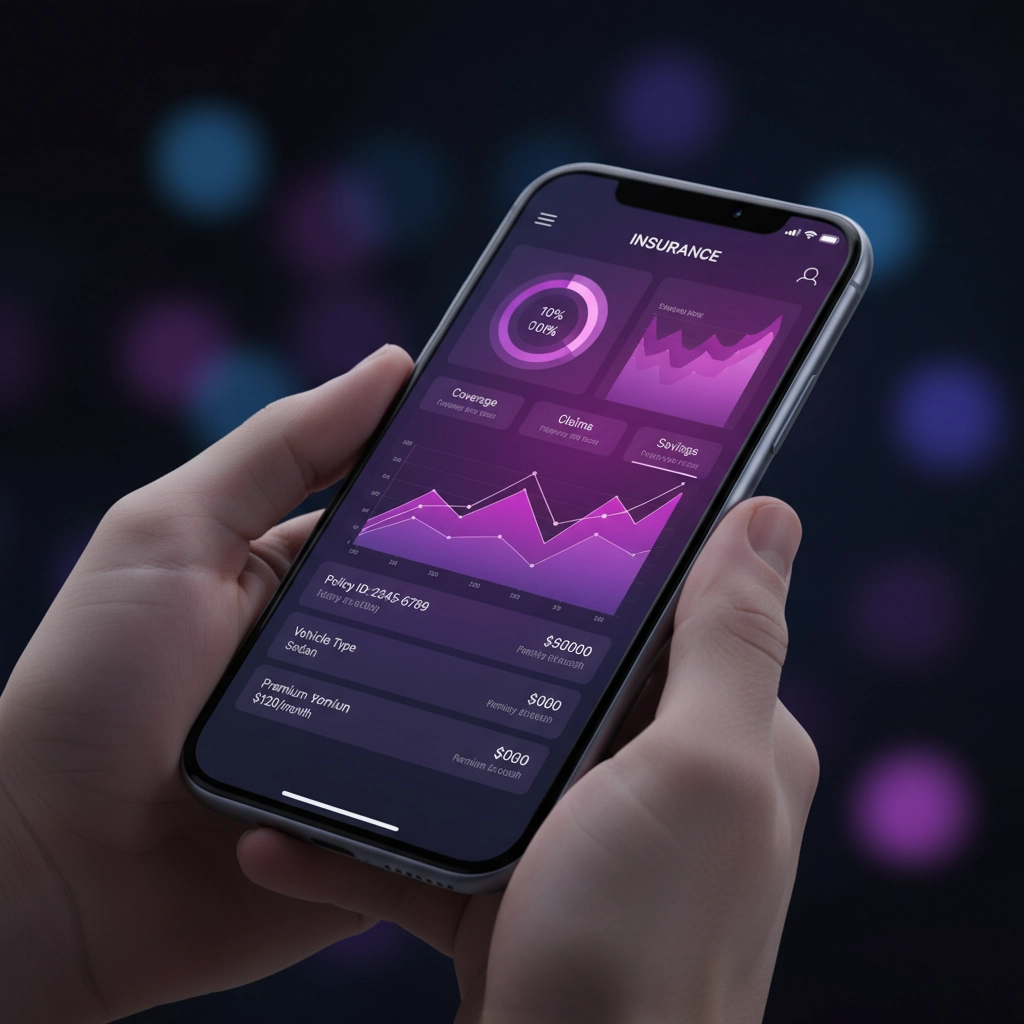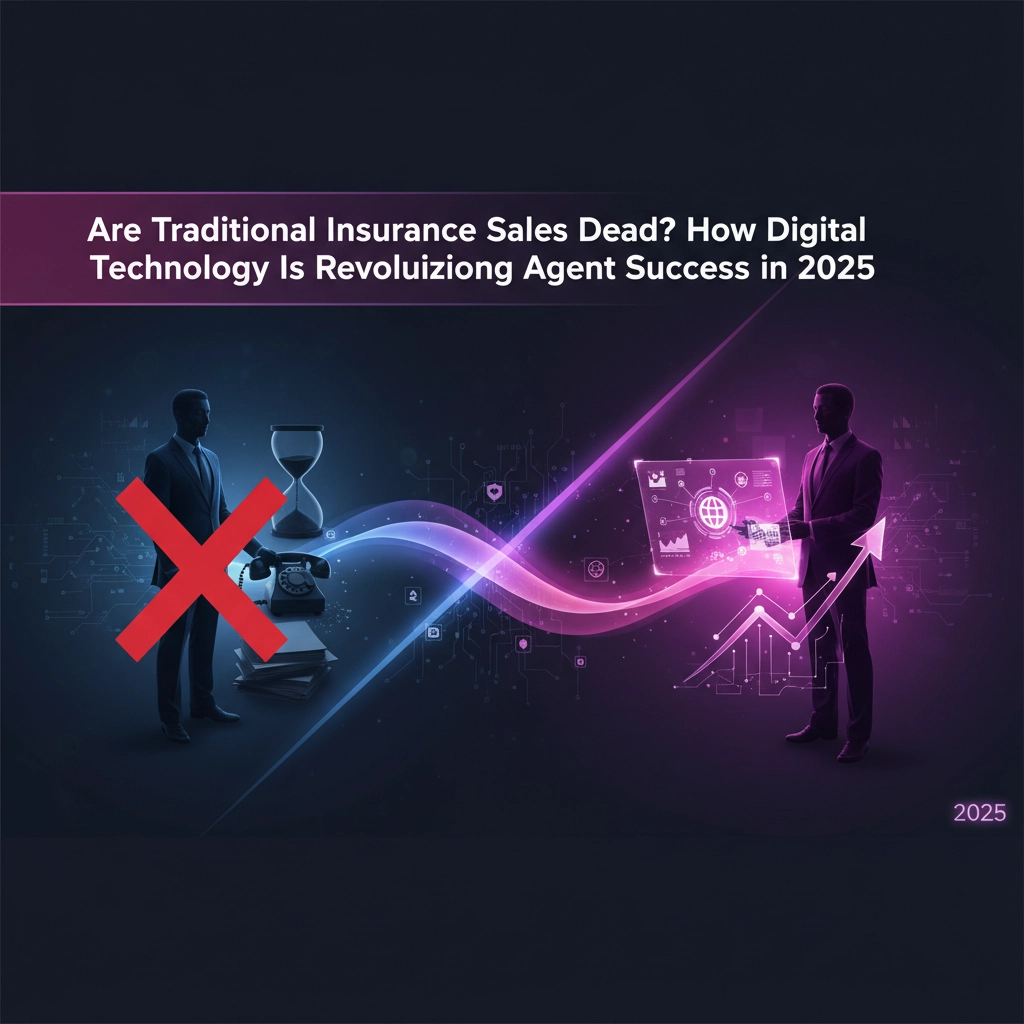The Evolution, Not Death, of Insurance Sales
Traditional insurance sales aren't dead: they're transforming at breakneck speed. The question facing independent agents in 2025 isn't whether technology will replace them, but whether they'll adapt fast enough to leverage it. Market data tells a compelling story: U.S. annuity sales reached $223 billion in the first half of 2025, marking a 3% increase and the highest quarterly total ever recorded. Meanwhile, 67% of insurance firms are accelerating their digital transformation initiatives, signaling that the industry's future belongs to tech-enabled agents, not tech-resistant ones.
The insurance landscape has fundamentally shifted from a choice between human expertise and digital efficiency to a hybrid model where successful agents combine both. Independent agents who embrace insurance technology for agents are discovering they can process more quotes, close more deals, and serve clients better than ever before.

Old School vs New School: The Great Divide
The contrast between traditional and digital insurance sales methods reveals why adaptation has become essential for agent survival. Old-school insurance sales typically involve lengthy paperwork sessions, multiple carrier phone calls, manual data entry, and quote processes that stretch across days or weeks. Agents spend 60-70% of their time on administrative tasks, leaving limited bandwidth for actual selling and relationship building.
New-school digital insurance sales flip this equation entirely. Modern agents leverage scan insurance technology to capture driver's license information instantly, auto-populate applications, and deliver quotes in under two minutes. The time savings are dramatic: what once required 30-45 minutes of manual work now takes 90 seconds with advanced scanning platforms.
This efficiency gap creates competitive advantages that compound over time. While traditional agents struggle with one quote per hour, digitally-enabled agents can process 20-30 quotes in the same timeframe. The mathematics of market share become obvious: agents who can respond faster, quote more accurately, and bind policies instantly capture disproportionate shares of available business.
The Speed Revolution: 90-Second Policy Binding
The insurance industry's speed revolution centers on eliminating friction from the quote-to-bind process. InsureScan's patented scan-to-quote technology exemplifies this transformation, enabling licensed agents to complete automobile insurance quotes in approximately 90 seconds. The process begins with scanning a driver's license, which automatically populates applicant data, retrieves motor vehicle records, and initiates real-time carrier comparisons.
This technological capability addresses a critical consumer expectation: 84% of insurance shoppers expect quote completion within two minutes of initial contact. Traditional workflows cannot meet this standard, creating an immediate competitive disadvantage for agents who haven't modernized their processes.
The 90-second binding capability isn't just about speed: it's about conversion rates. Scan-enabled quotes convert at 43% compared to 18% for traditional processes, nearly tripling close rates while dramatically improving customer satisfaction scores.

Mobile-First Agent Success
The shift to mobile-first operations represents perhaps the most significant change in how insurance business gets conducted. Modern agents no longer need to be tethered to office desks or desktop computers to write policies. Mobile insurance technology enables quote generation, policy binding, and customer service from any location with internet connectivity.
This mobility advantage proves particularly valuable for automobile insurance sales, where agents can meet customers at convenient locations, provide immediate quotes during vehicle purchases, or service existing clients without scheduling office visits. The convenience factor alone drives higher customer satisfaction and referral rates.
Alabama and South Carolina markets have embraced mobile insurance solutions particularly rapidly, with adoption rates exceeding national averages. Local agents report that mobile capabilities have expanded their effective service territories and enabled them to capture business that would previously have gone to direct-to-consumer platforms.
Market-Specific Advantages: Alabama and South Carolina
Alabama and South Carolina present unique opportunities for agents leveraging digital insurance sales technology. Alabama's 20% uninsured motorist rate creates substantial market opportunities for agents who can quickly educate prospects about uninsured motorist coverage alabama requirements and provide immediate quotes that demonstrate value.
South Carolina's insurance market has shown particularly strong adoption of digital verification processes, with 68% of independent agencies implementing technology enhancements over the past 18 months. The state's regulatory environment supports digital verification methods, enabling scan-to-quote workflows that maintain compliance while accelerating processing times.
These regional factors create competitive advantages for early technology adopters. Agents who can demonstrate immediate value through fast quotes and comprehensive coverage explanations capture market share from both traditional competitors and online-only platforms that lack local expertise.

The Personalization Imperative
Digital transformation enables personalization at scale: a capability that separates successful agents from struggling ones. By 2026, nearly half of all insurers will differentiate primarily on their ability to deliver hyper-personalized products and services at convenient touchpoints. This trend favors independent agents who combine local market knowledge with digital tools that enable customized solutions.
AI-powered insurance platforms analyze customer data to suggest optimal coverage combinations, identify cross-selling opportunities, and predict client needs before they're explicitly stated. These capabilities transform agents from order-takers into strategic advisors who proactively manage risk for their clients.
The personalization advantage becomes particularly pronounced in complex coverage scenarios like uninsured motorist protection, where agents can instantly model different coverage levels and demonstrate financial impact through scenario analysis. This consultative approach builds stronger client relationships and justifies premium pricing.
Overcoming Digital Resistance
Despite compelling advantages, some agents resist digital transformation due to perceived complexity or implementation costs. However, market data demonstrates that resistance creates existential risks. Agencies that delay technology adoption report declining market share, reduced profitability, and difficulty attracting younger staff members who expect modern tools.
Successful technology implementation follows predictable patterns. Leading agencies invest 16-20 hours in comprehensive training, integrate new platforms with existing management systems, and develop marketing materials that highlight speed and convenience benefits. These investments typically achieve break-even within 4-6 months through improved conversion rates and operational efficiencies.
The financial returns extend beyond immediate sales gains. Tech-enabled agencies report 34% average revenue growth in the six months following implementation, with customer satisfaction scores improving to 91% compared to 67% for traditional processes.

Future Market Dynamics
Industry projections indicate that scanning and mobile capabilities will become standard practice within three years, transforming current competitive advantages into basic operational requirements. Agencies that delay implementation risk permanent market position deterioration as consumer expectations continue evolving toward instant, digital-first experiences.
Carrier partnerships increasingly favor agencies with demonstrated technological capabilities. Major insurers report that scan-generated applications have 23% lower error rates and require 67% less manual intervention during underwriting processes. These operational benefits translate into preferential commission structures and enhanced support services for tech-enabled agencies.
The regulatory environment will likely accelerate technological adoption through updated compliance requirements that favor digital verification processes. Both Alabama and South Carolina insurance departments have indicated support for innovations that improve consumer protection while enhancing operational efficiency.
The Hybrid Success Model
The most successful insurance agents in 2025 operate hybrid models that combine human expertise with technological leverage. These agents use digital tools for routine tasks: data capture, quote generation, policy binding: while focusing their personal attention on complex problem-solving, relationship management, and strategic advising.
This approach maximizes both efficiency and effectiveness. Agents can process higher quote volumes while maintaining the consultative relationships that drive long-term client value. The technology handles speed and accuracy requirements, while agents provide the judgment and local knowledge that differentiate independent agencies from direct-to-consumer alternatives.

Implementation Roadmap for Independent Agents
Successful digital transformation requires systematic planning and execution. The most effective agencies follow structured implementation frameworks that maximize technology benefits while minimizing operational disruption.
Phase one involves staff training and system integration. Agencies achieving optimal results invest in comprehensive technology education covering both technical operation and customer interaction protocols. System integration with existing agency management platforms ensures seamless data flow and eliminates duplicate entry requirements.
Phase two focuses on customer communication and marketing strategy development. Effective agencies create materials that emphasize speed and convenience benefits while educating prospects about technology accuracy and comprehensiveness. This communication strategy helps differentiate scan-enabled agencies from both traditional competitors and online-only platforms.
The evidence is clear: traditional insurance sales aren't dying, but they are evolving rapidly toward technology-enabled hybrid models. Independent agents who embrace digital insurance sales technology position themselves for sustained growth in an increasingly competitive marketplace. Those who resist face mounting competitive pressures from both tech-savvy peers and well-funded digital platforms.
The choice for independent agents is straightforward: adapt to leverage technology's advantages or risk obsolescence in a market that increasingly rewards speed, efficiency, and personalized service delivery.

